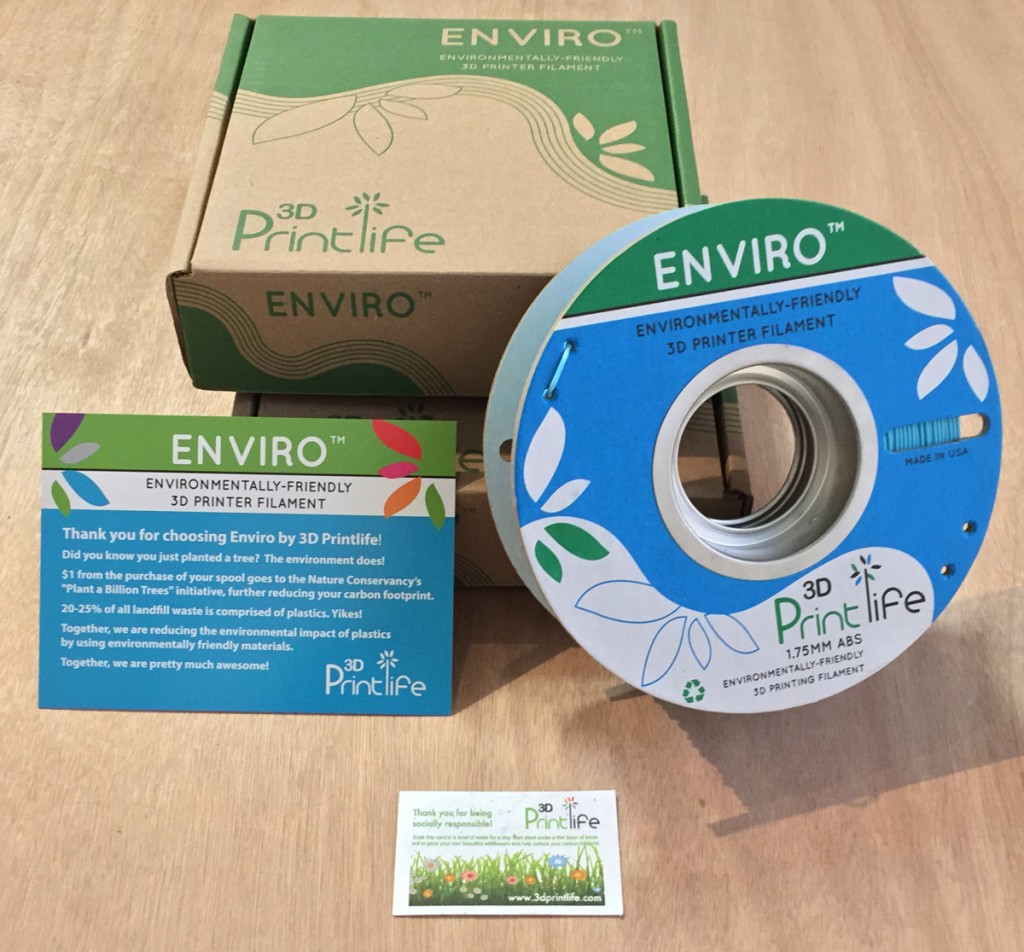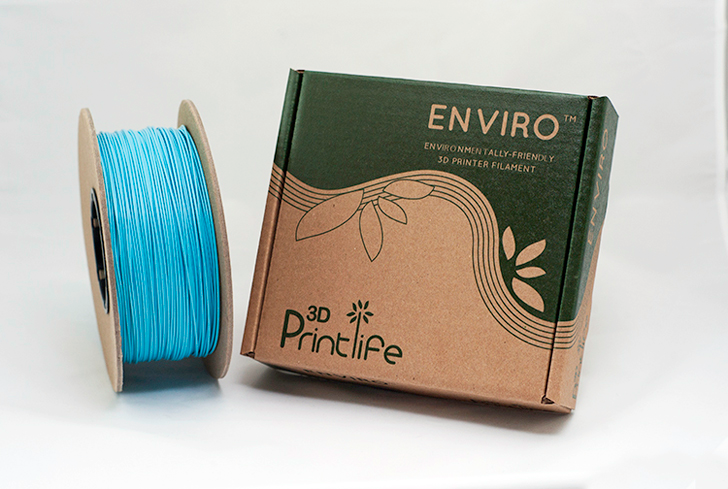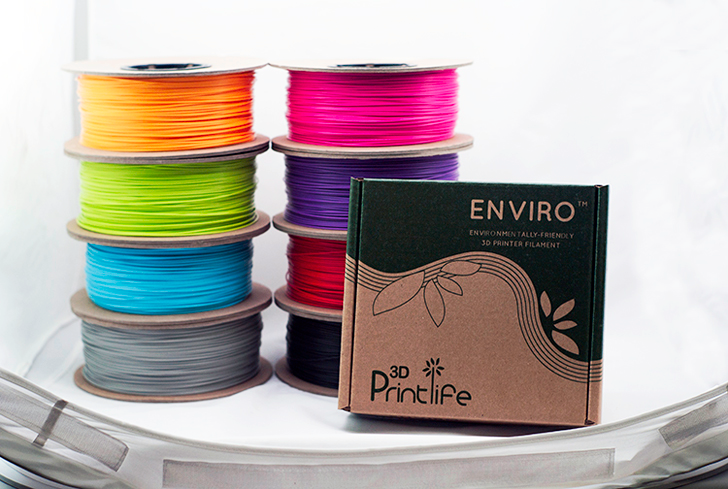LA-based 3D Printlife has been selling 3D printers and filaments for about as long as I’ve been writing for 3D Printing Industry. And, while they’ve often come up with inventive promos and designs, the company has now launched their first filament line, Enviro ABS, a form of ABS specially engineered to be biodegradable.
CEO of 3D Printlife, Jeff Stevens, says in a press release, “We set out to make a filament that is good for the environment and still prints well. We are excited that Enviro not only prints well, it prints incredibly well!” The company’s Enviro ABS is the result of a collaboration between 3D Printlife and a chemist in the Boston area who focuses on biodegradable plastic packaging and had already designed bio-additives for the cosmetics and hospitality industries that bonds with plastics to make them biodegradable.
Buzz Baldwin, COO of 3D Printlife explains, “We began talking about the various plastics used in 3D printing, and we discussed the possibility of creating an additive that could make an ABS filament that was biodegradable. Though there was no guarantee it would work, we were so thrilled with the idea of bringing and eco-friendly ABS option to the consumer; we decided the risk was well worth the attempt. After months of testing multiple biopolymers, blends, extrusion lines, and actual 3D prints…Enviro was born!”
The firm suggests that Enviro ABS obtains great print quality, accuracy, and dimensional stability, something that they say has been validated by independent experts. For instance, Founder of Sierra Resins, Stephen Conley, states, “I am delighted with the printing quality of Enviro ABS. After nearly five years of materials experiment and many hours of lab trials, we are honored that we’ve played a role in this effort, culminating in a superior 3D printer filament!”
In addition to the material itself, 3D Printlife has created environmentally friendly spooling and packaging to go along with it. The spool itself is made from recycled cardboard and the filament is contained in a re-sealable plastic bag, and there are dual puncture slots on both flanges of the spool to secure the filament strand. The spool is designed to be fit just about every 3D printer on the market.

3D Printlife still seems pretty committed to the environment with this product, though, in most other ways. For instance, with every purchase of Enviro ABS, the firm will donate $1 to the Nature Conservancy’s “Plant a Billion Trees” fund, which plants trees in key forests through the US. On top of that, every spool of the material comes with a piece of “seed paper” that, when placed in a small bowl of water and planted under some loose soil, will sprout up annual and perennial wildflowers in your garden. And, because the seed paper has been printed with soy-based inks, it is environmentally friendly, too.
For those looking to print ABS without worrying about the biodegradability of their prints, Enviro ABS does its best to keep your conscience in mind. It retails for $49.99 and can be purchased through the 3D Printlife site. I’d say that, once they find a solution to the petroleum problem, the LA firm might have a pretty ideal product for our ecosystem.




